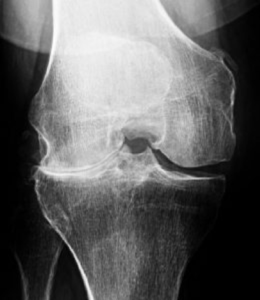The Preacher
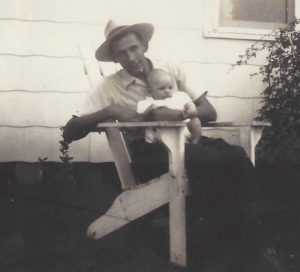
My dad was born 100 years ago on this day in 1918 in Appomattox, Virginia, near the McLean house where Lee surrendered to Grant a half century earlier.
He had a pretty rough childhood. His parents divorced when he was a baby and he grew up bouncing back and forth between them.
His mother caught tuberculosis when he was in grade school. After his death, we found a tin box in his bedroom with letters she sent him from the hospital, trying to put a bright face on her condition. She told him how much she missed him and promised they’d be together soon. She died when he was twelve.
He graduated from high school during the depression. There were no jobs in Appomattox, and severe asthma disqualified him from military service. The military installations in Virginia’s tidewater area were hiring in the run-up to World War II, so he moved to Yorktown and got a job in the Navy Mine Depot’s maintenance department.
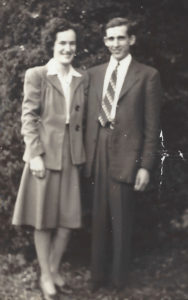 Mom worked there, too, and Dad fell for her. She was seventeen when they eloped, running across the state line to North Carolina, which didn’t require her parents’ consent to tie the knot.
Mom worked there, too, and Dad fell for her. She was seventeen when they eloped, running across the state line to North Carolina, which didn’t require her parents’ consent to tie the knot.
Mom telephoned her father (my Papaw) in the middle of the night and broke the news. At my parents’ sixtieth wedding anniversary celebration, I asked my uncle, her oldest brother, how that call went down. He said Papaw looked like he wanted to kill someone.
That someone was Dad, I guess, but I never saw any evidence of Papaw’s hard feelings. Dad’s tough childhood left him insecure and anxious, but Papaw always encouraged him. “You can do anything if you’ve got Willy on your side,” he used to say to Dad. “Willy” was will power.
With Willy on his side, Dad left his job at the Depot and opened his own Hudson car dealership, where he found his first great passion, selling cars. He sold so many Hudsons that the Hudson Company wanted to leverage his talent by moving him to Hagerstown, Maryland, to manage a much bigger dealership.
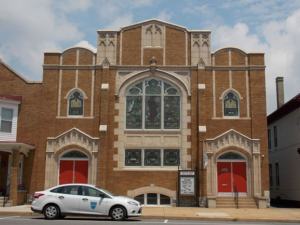
Mom agreed to the move only if Dad promised to go to church in Hagerstown. He had steadfastly refused to attend Sunday services up to that point, but he caved in to her demand and we piled everything we had in a moving van and headed up there.
At first, Dad groused every step of the way to the Church of the Lighted Window, but a few months into it, he stopped complaining. A year later, he became the church lay leader. Soon afterwards, he went on a weekend religious retreat where he found his second great passion, this one so all-consuming that it turned our lives upside down.
When Dad came home from the retreat, he dropped his suitcase on the floor, beamed at Mom, and announced, “Honey, I’m going to be a preacher!”
Shocked and not so pleased, Mom said, “But all I wanted you to do was go to church.”
The keynote speaker at the retreat was a Methodist bishop with Parkinson’s disease, who spoke about his life of service. At the end of his talk, the bishop raised his hand and called to the altar those who wanted to commit their lives to Christ. On his death bed fifty years after the event, Dad said he could still see the bishop’s pale palsied hand fluttering in the air like the broken wing of a white dove. That hand grabbed him by the heart and called him to preach the Word.

A car salesman in his mid-thirties with a wife and three sons, no education beyond high school, and no way to pay for college and seminary, he was an improbable candidate for the ministry. The only path to the pulpit open to him was a long hard slog through a seemingly endless swamp of correspondence school courses while he worked full-time selling cars.
He spent five years studying course materials he received in the mail, taking tests and writing essays, and sending them back to the course administrators for evaluation. In 1960, the Methodist Church finally accepted him provisionally as a “supply pastor.” That status entitled him to be considered for assignment to a church only after all the fully qualified ministers had been given a post.
In 1961, the Methodist hierarchy gave Dad his first appointment, a four-church charge known as the Albemarle Circuit, two churches with 100 members and two with less than 50, and we moved to White Hall, Virginia, a rural town at the foot of the Blue Ridge mountains.

I thought Dad would almost certainly fail. He had no formal training in public speaking or counseling, and the workload was crushing.
The first Sunday we were there, he met with a young single mother who was suicidal because her husband had been killed in an accident. Dad moved her into the parsonage, and she lived with us for a week. She was in her sixties the last time I saw her.
Meningitis killed the infant of a young couple. He brought them through their grief, and they went on to have four more children.
A man in a position of trust molested a teenage boy, plunging him into chronic depression. Dad helped him heal his wounds and move on with his life.
These are the early stories. Hundreds more followed.
After attending night school at UVA and completing another barrage of correspondence courses, Dad was ordained as a full-fledged minister. He served six churches over a twenty-five year career. In his late sixties, he tried to retire, but it didn’t take. He volunteered to pastor a church that couldn’t afford a full-time minister and preached there for almost a decade. In his eighties, he asked for an appointment closer to his home. They gave him a little church in its death throes, its congregation down to about ten stalwarts. He revived it, building it up to 50 regular attendees.
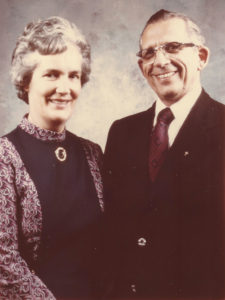 He had a stroke when he was 86. One month later, he returned to the little church’s pulpit, this time in a wheel chair, and Christian-soldiered on until old age broke him down.
He had a stroke when he was 86. One month later, he returned to the little church’s pulpit, this time in a wheel chair, and Christian-soldiered on until old age broke him down.
No longer able to preach and bed-ridden, he told us he was ready to go to heaven.
I sat by his bed, and we talked about old times. “How did you do it?” I asked him. “How did you overcome all the obstacles?”
He paused for a long time. “Determination,” he said. Papaw’s Willy, I thought. “And my Faith.”
He slept almost all the time his last few days. The hospice lady said he was preparing to die. Mom rolled her wheelchair up to his bed and took his hand. “It’s okay, Tommy. You can go on now.” I don’t know if he heard her, but he let go soon after that.
Four Methodist ministers preached at his funeral. We sang In the Garden, his favorite hymn. Its stanzas are about walking and talking with Jesus in a rose garden. One of the many Methodist preachers Dad had shepherded into the ministry ended the funeral service by saying that Dad had been walking and talking with Jesus those last days when he was asleep. “When they’d walked a long way up the road,” he said, “Jesus told Tommy, ‘You know, my place is closer than yours. Let’s just go on up there together.’”
If heaven is a place where your dreams are fulfilled, I know what my dad’s doing right now. There’s a little country church with sunlight coming through stained glass windows to paint rainbow colors on the pine pews. The sanctuary is full. Mom’s playing a hymn on the piano. When the singing’s done, she moves from the

piano bench to the front pew and sits beside me and my brothers, all dressed in our Sunday best.
Dad stands and takes his place at the pulpit, back straight, voice strong.
Rest in Peace, Dad.




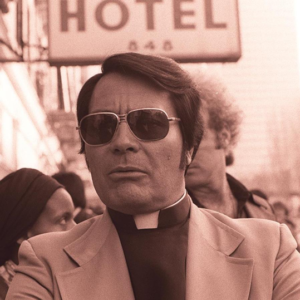
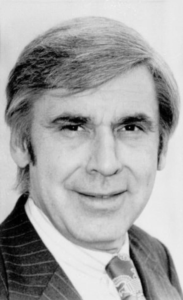

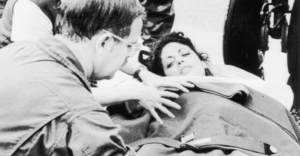

 The morning of my knee replacement surgery, my wife and I drove along Medical Center Drive at 5:30 a.m. When we turned into the West Hills Hospital parking lot, the headlights washed over a teenage boy wearing a pair of white boxer shorts, a blue bath towel tied around his neck, and nothing else, running along the sidewalk, laughing maniacally, tilting his outstretched arms back and forth like a big bird banking in the wind. We watched him sprint across the lot to the bus stop on Sherman Way, his shoulder length black hair and the towel fanning out behind him, his knees pumping, his bare feet slapping the asphalt.
The morning of my knee replacement surgery, my wife and I drove along Medical Center Drive at 5:30 a.m. When we turned into the West Hills Hospital parking lot, the headlights washed over a teenage boy wearing a pair of white boxer shorts, a blue bath towel tied around his neck, and nothing else, running along the sidewalk, laughing maniacally, tilting his outstretched arms back and forth like a big bird banking in the wind. We watched him sprint across the lot to the bus stop on Sherman Way, his shoulder length black hair and the towel fanning out behind him, his knees pumping, his bare feet slapping the asphalt.